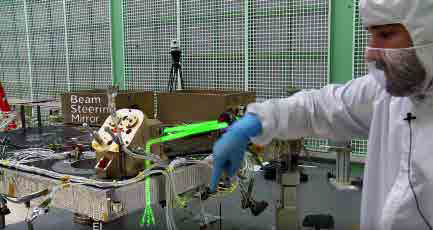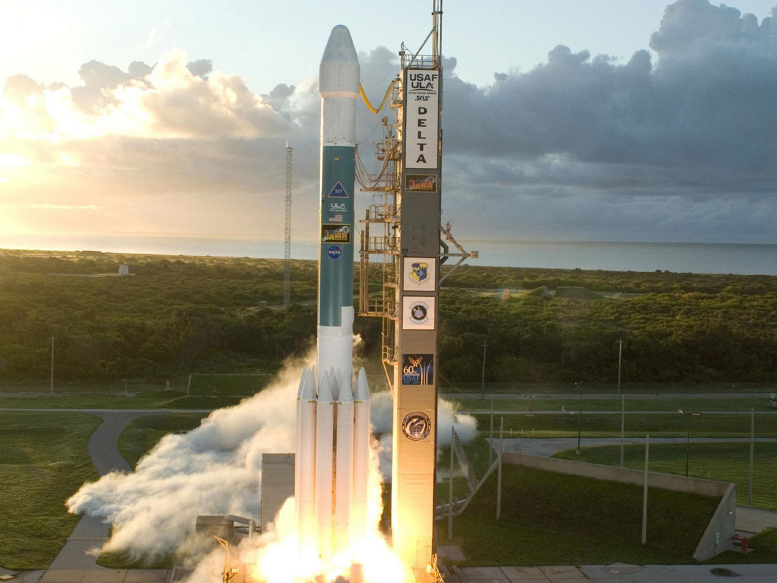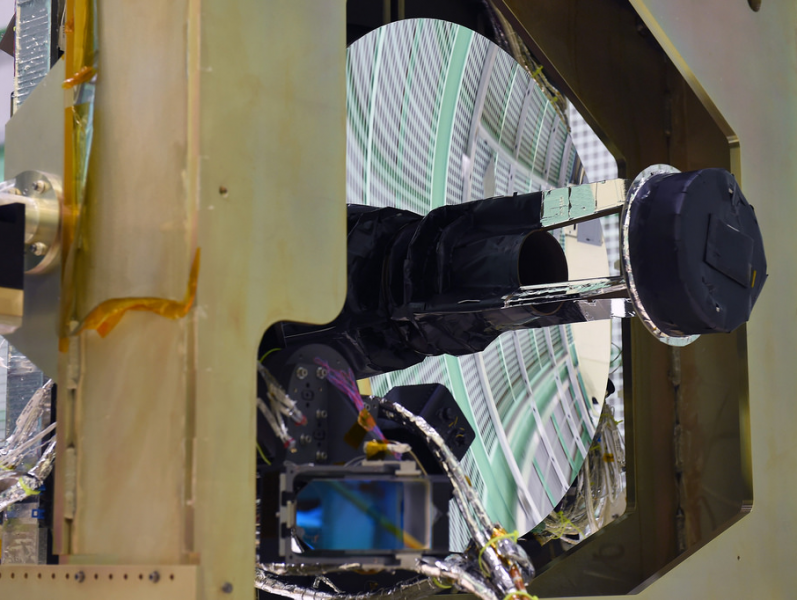Spacecraft in Control
The ICESat-2 spacecraft provides power and orbit control for ATLAS, the mission's height-measuring instrument. The spacecraft also supplies propulsion, navigation, attitude control, thermal control, data storage and handling, ground communication, and more. ICESat-2 also features a novel way of situating itself in space. When a goal of an Earth-observing satellite mission is to measure the elevation of ice sheets to within an inch or so, it's critical to know where in space the satellite is positioned.
ICESAT-2 BY THE NUMBERS
92-degree inclination,
91-day repeat
average of 1320 Watts
To determine this position, ICESat-2's spacecraft bus and its computer programs on the ground were designed with strict specifications so scientists can know precisely where on the planet's surface the instrument is taking measurements.

The spacecraft has a GPS aboard and a very specific center-of-gravity knowledge, which allow the satellite to calculate its position in space to within 16 feet. Scientists have conducted ground calibration studies and analysis to refine the positioning even further. Knowing the spacecraft's altitude is key, since the instrument measures the distance from itself to the ground; if ATLAS is higher or lower than expected, the Earth elevation measurements will be off.
ICESat-2's design enables scientists to precisely calculate its location in space, and where its telescope is pointing. (NASA)
Ready for Launch
Northrop Grumman in Gilbert, Arizona built and tested the ICESat-2 spacecraft, while the ATLAS instrument was built and tested at NASA's Goddard Space Flight Center in Greenbelt Maryland. The instrument was shipped to Arizona to be integrated with the spacecraft. The assembled and tested ICESat-2 satellite launched from Vandenberg Air Force Base in California on 15 September 2018, in United Launch Alliance's Delta II rocket. It was the last Delta II rocket, which has launched more than 50 NASA science missions.

ICESat-2 launched on a Delta II rocket, made by United Launch Alliance. (NASA)


